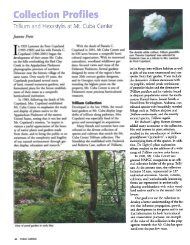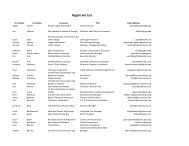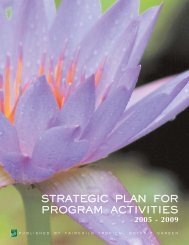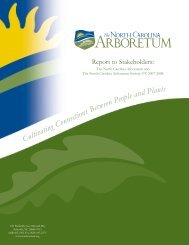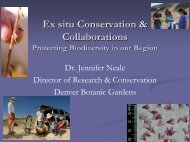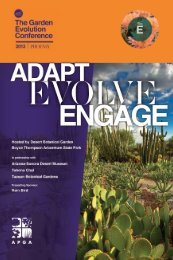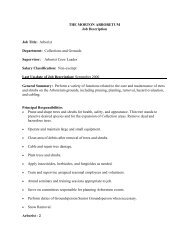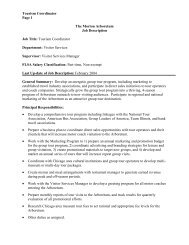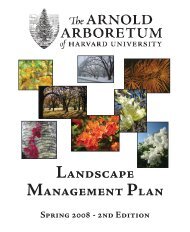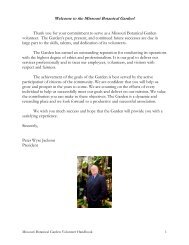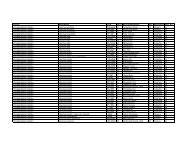Field Check Operations Manual, 2009 - American Public Gardens ...
Field Check Operations Manual, 2009 - American Public Gardens ...
Field Check Operations Manual, 2009 - American Public Gardens ...
Create successful ePaper yourself
Turn your PDF publications into a flip-book with our unique Google optimized e-Paper software.
Do not enter a field check if the plant material is in any way questionable. Likewise, read<br />
prior field check thoroughly; they may indicate error(s). Additional sleuthing may be<br />
necessary (see pg. 14, Section 2.2.5. Step 5 – Complete Office Tasks, Consult).<br />
a) Coarse identity – Does the plant and label information match? If the label and plant<br />
do not match, additional verification may be necessary (see pg. 13, Verify Plant<br />
Identity).<br />
b) Condition – Assign a subjective health rating. The Arnold Arboretum has<br />
operationally defined BG-BASE plant conditions as follows:<br />
Making observations on living plants in the collection is an integral part of the<br />
documentation process. In order to facilitate objectivity and to ensure common usage<br />
among evaluators, the following standardized condition definitions are to be used as a<br />
guide for staff and others during their plant health assessments. Special projects and/or<br />
other collection management activities such as the Plant Health Program may dictate<br />
additional plant condition use.<br />
LIVING PLANT CONDITIONS:<br />
Alive (A) - Plant present.<br />
Primarily used in the dormant season or if none of the observations relate to<br />
plant health: e.g., presence/absence notations, phenology, only<br />
aesthetic/ornamental value, height/DBH measures, etc.<br />
Historic evaluations; e.g., date or year noted on accession cards, maps,<br />
correspondence, etc.<br />
<strong>Check</strong>_note field use encouraged<br />
Excellent (E) - An outstanding and/or exemplary plant, not just in good health<br />
but thriving (vigorous).<br />
No recent structural damage or defects; no pest(s) or disease(s)<br />
Past damage has fully compartmentalized<br />
<strong>Check</strong>_note field use required<br />
Good (G) - A plant in good health, actively growing, no evidence of decline.<br />
Minor structural damage or disease that is not significantly harming the plant<br />
(e.g., powdery mildew can still grow on a ‚good‛ Syringa).<br />
Compartmentalization proceeding well<br />
<strong>Check</strong>_note field use encouraged<br />
Fair (F) - A plant in minor decline (minimal vigor), but not life-threatening.<br />
Notable pathological, structural, or physical damage<br />
11




